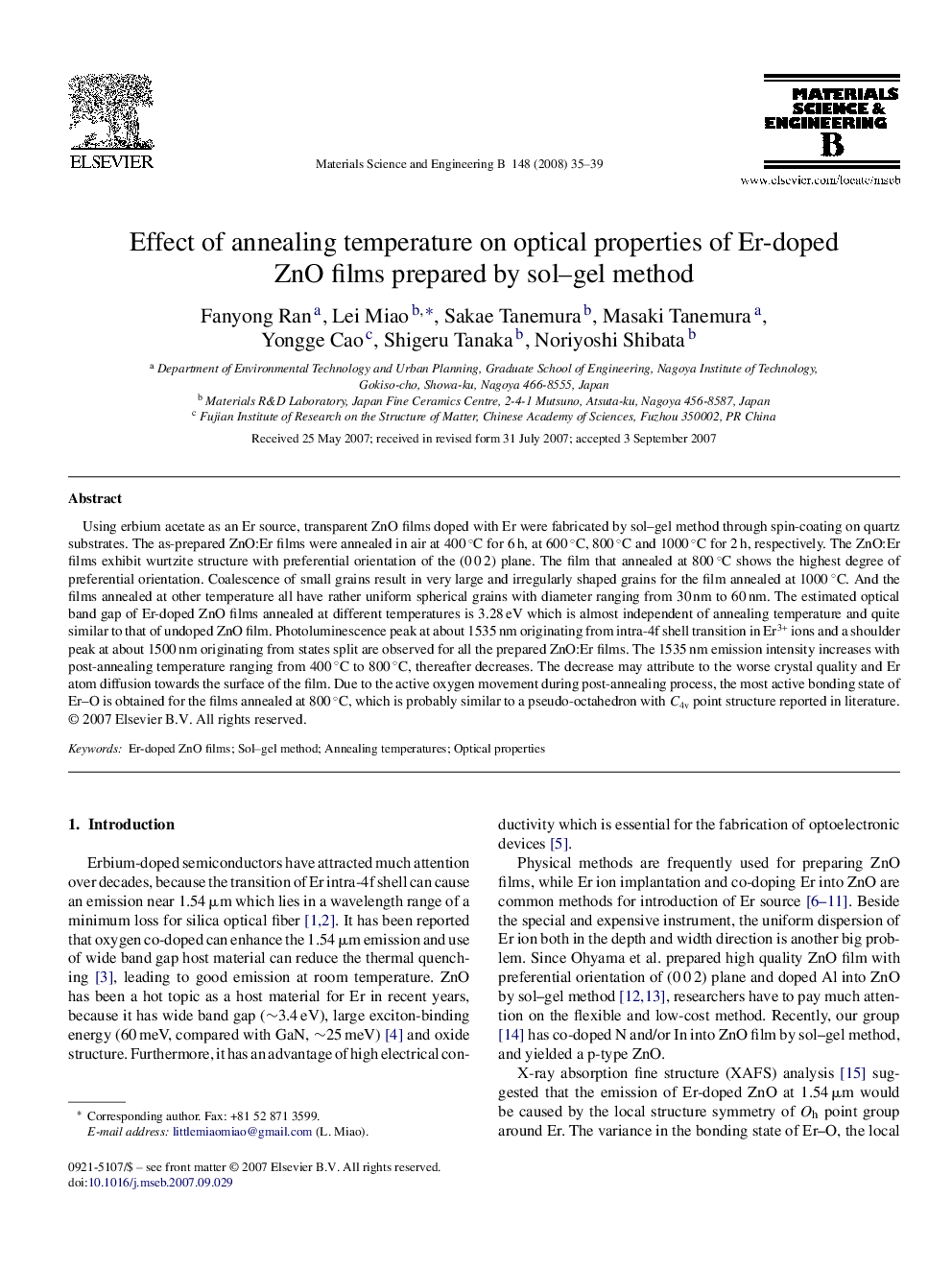| Article ID | Journal | Published Year | Pages | File Type |
|---|---|---|---|---|
| 1530851 | Materials Science and Engineering: B | 2008 | 5 Pages |
Using erbium acetate as an Er source, transparent ZnO films doped with Er were fabricated by sol–gel method through spin-coating on quartz substrates. The as-prepared ZnO:Er films were annealed in air at 400 °C for 6 h, at 600 °C, 800 °C and 1000 °C for 2 h, respectively. The ZnO:Er films exhibit wurtzite structure with preferential orientation of the (0 0 2) plane. The film that annealed at 800 °C shows the highest degree of preferential orientation. Coalescence of small grains result in very large and irregularly shaped grains for the film annealed at 1000 °C. And the films annealed at other temperature all have rather uniform spherical grains with diameter ranging from 30 nm to 60 nm. The estimated optical band gap of Er-doped ZnO films annealed at different temperatures is 3.28 eV which is almost independent of annealing temperature and quite similar to that of undoped ZnO film. Photoluminescence peak at about 1535 nm originating from intra-4f shell transition in Er3+ ions and a shoulder peak at about 1500 nm originating from states split are observed for all the prepared ZnO:Er films. The 1535 nm emission intensity increases with post-annealing temperature ranging from 400 °C to 800 °C, thereafter decreases. The decrease may attribute to the worse crystal quality and Er atom diffusion towards the surface of the film. Due to the active oxygen movement during post-annealing process, the most active bonding state of Er–O is obtained for the films annealed at 800 °C, which is probably similar to a pseudo-octahedron with C4v point structure reported in literature.
